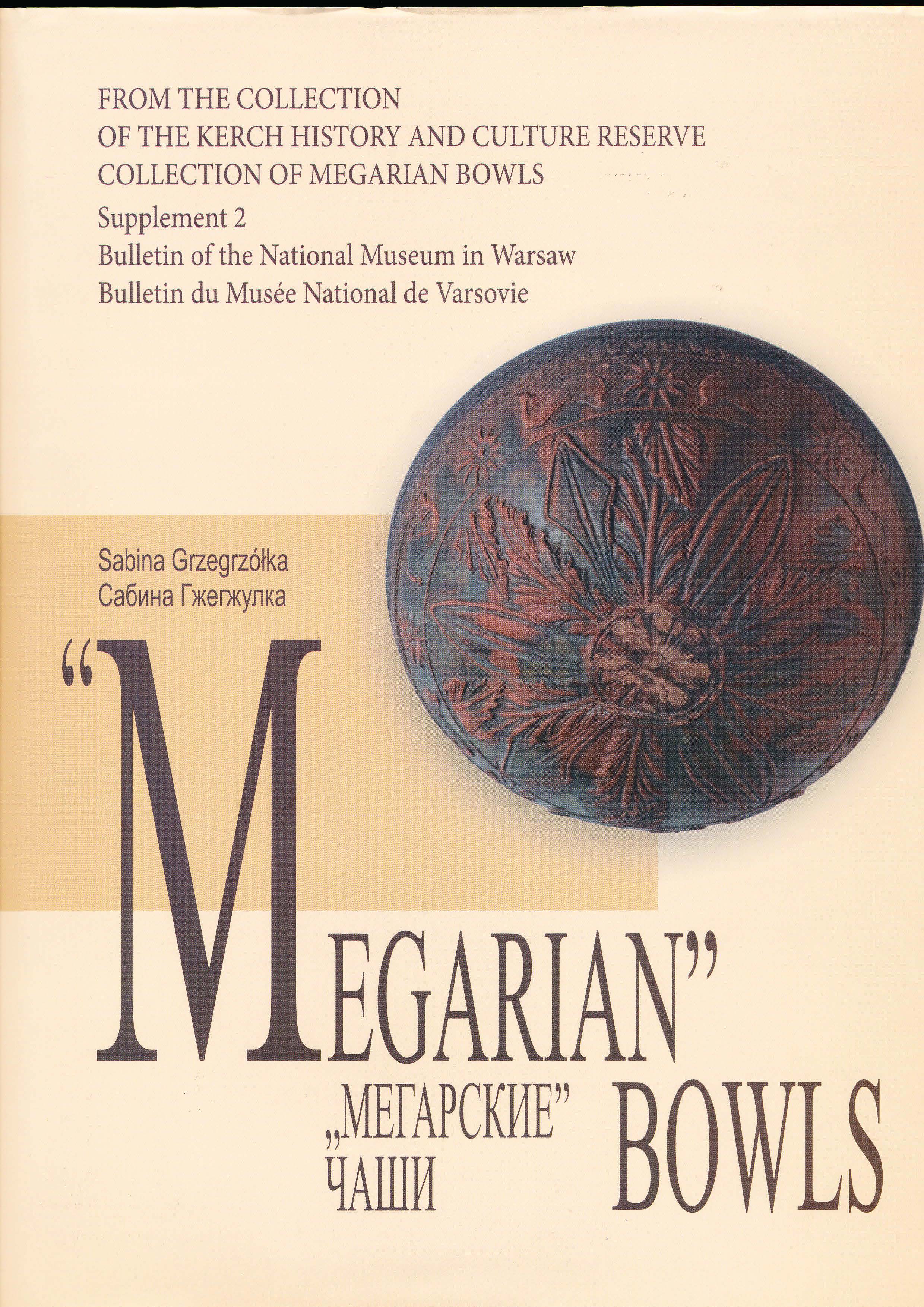
Sabina Grzegrzółka, „Megarian” Bowls from the Collection of the Kerch History and Culture Reserve, Part 1, The National Museum in Warsaw, Wydawnictwo DiG, Warsaw 2010. Publication is a part of the series: „From the Collection of the Kerch History and Culture Reserve. Collection of Megarian Bowls”, Vol. 1 and as a Supplement 2, Bulletin of The National Museum in Warsaw (Bilingua: English-Russian)
The collection of the Kerch Museum includes about 2000 pieces (data for 2005) representing one of the most characteristic types of Late Hellenistic ceramics, that is, molded relief bowls. Most of the collection comes from excavations carried out by Ukrainian and Russian, previously Soviet, archaeologists on numerous sites found in the territory of the ancient Bosporus kingdom. A relatively innumerous set originated from the so-called old collections as well as chance finds on the surface or during various building works. In this group, information on provenance is either non-existent or extremely laconic.
The collection is substantial and considerably differentiated in terms of the decoration as well as place of manufacture and findspot. It would not have been possible to present it in a single publication, hence its division into groups. Respecting excavators’ right to publish material from individual excavations, the Kerch Museum authorities decided to devote volume one of the publication to the earliest of the finds in their collection. The end of the 1970s was set as an arbitrary borderline date for acquisitions in this group. It is surely a technical criterion, but one that appears justified in this case. Expeditions from Petersburg, formerly Leningrad, and Moscow have not stopped playing an important role in the archaeological investigation of Crimea. Under the Soviet Union, finds from archaeological excavations were placed in the collections of associated museums, hence most of the objects were sent to the Hermitage or the Pushkin Museum. The Kerch Museum holdings are bit a small percentage of the objects found in this region. This situation changed following the creation of an independent Ukraine, with all archaeological finds now entering local museum collections. The effect are quickly inflated museum collections and a full picture of the assemblage coming from any given archaeological site.